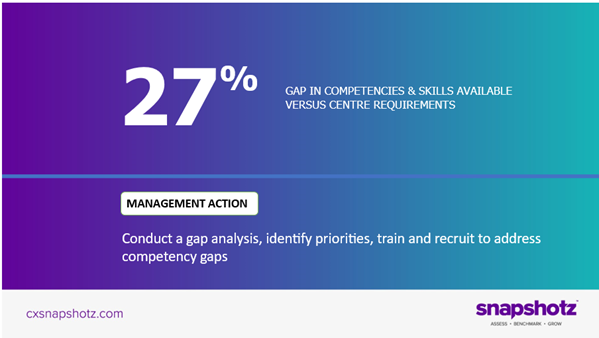By
Deepak Selvaratnam
|
Date Published: February 19, 2025 - Last Updated February 19, 2025
|
Comments
You want to put your best team forward. Just like any sports team, it's essential for both generalists and specialists to have their skills refined through training and practice, ensuring they are ready to perform at their best to win.
In a contact center, the game begins at the start of the day. Specialist and generalist competencies must be sharp and ready for every customer interaction throughout the day.
There may come a time when AI-powered agents replace contact center agents. However, until that day arrives, contact centers must ensure that all team members are prepared and equipped for their roles. While we will also need to train and equip our AI agents in the future, that discussion is for another time.
Training still matters
Today, we focus on supporting agents in upskilling and providing them with on-demand information through tools like AI-driven knowledge management and automated processes. This approach reduces the burden on frontline staff without eliminating the need for the right skills and competencies to be in place.
Each center has a unique mix of capabilities and is at different stages of technological advancement. Despite these differences, data from Snapshotz (the contact center audit and benchmarking app that has been in use since 2009) indicates that many centers are not utilizing their best team.
![]()

How do leaders meet the competency and skills gap?
Customer service leaders are usually stretched, seldom have adequate budgets, face varying levels of technological challenges and rarely have the full complement of resources and team members.
As chief coach and strategist, customer service leaders should consider several key questions at the beginning of a planning cycle or whenever they suspect that things are not quite right. It’s important not to wait for the official start of the planning cycle to reflect on these issues.
Drawing on experiences from over 4,000 contact center assessments and 4 million validated business practices, here is a checklist for leaders to work through.
|
Checklist for leaders: Bridging the competency gap
|
|
Competencies VS Skills
If there is anyone uncertain about the difference between competency and skills, this quote shows the difference;
“A skills matrix mostly contains employees’ skills evaluation and is a part of their knowledge.
A competency matrix includes knowledge, skills, and attitudes, so it should even encompass a skill matrix within.”
|
- Have we identified and documented the type of work and volume carried out by each department or team to meet organizational goals?
- Have we identified all the competency skills necessary to operate the center?
- Have we conducted a gap analysis comparing current skills against customer demands, compliance requirements, and other organizational needs?
- Do we have a prioritized list of competencies and skills, ranked from critical to nice-to-have?
- What are our future competency and skill requirements?
- What is our approach to validating and certifying the competencies needed to run a successful center?
- Do we have a grading system for each stage of employee development, along with a Learning Management System (LMS) and a competency and skills matrix to manage talent? Or equivalents)
- Does our development and training plan for the team align with these priorities?
- Do we have a training strategy and schedule in place, and is this plan reviewed regularly?
- Is there alignment between our training efforts and our workforce management strategy?
- Is there a clear link between quality team, training, knowledge and workforce management?
- Do we have sufficient reporting that visualizes the current status and analyzes the data to provide actionable management insights to feed operational and strategic considerations?
|